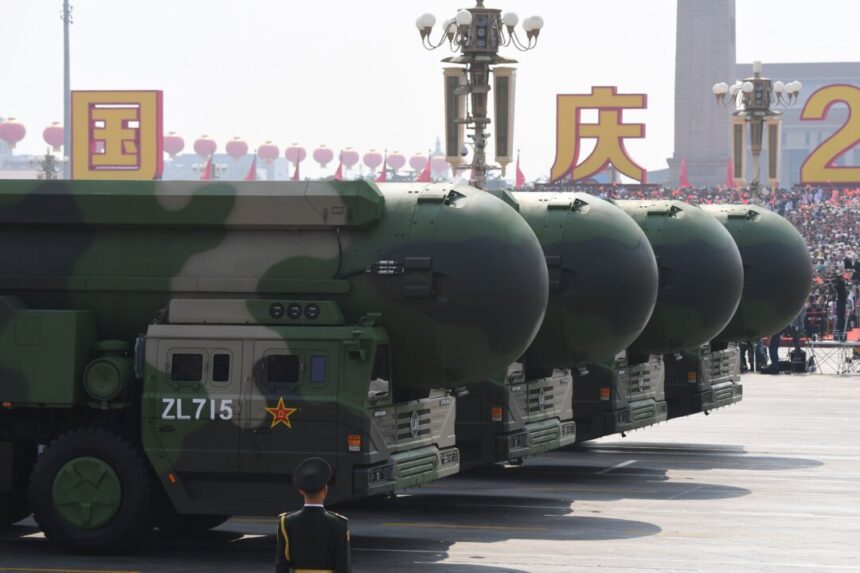In September, China conducted a test of an intercontinental ballistic missile (ICBM) in the South Pacific for the first time in 44 years. This rare test served both political and pragmatic purposes, evaluating the capabilities of the People’s Liberation Army Rocket Force (PLARF). The missile, believed to be the Dong Feng-41 (DF-41) or Dong Feng-31AG (DF-31AG), was launched from an undisclosed location and traveled approximately 12,000 kilometers. This test marked a significant development in China’s military modernization efforts and was seen as a message to regional and global players, particularly the United States, in the midst of escalating tensions in the Western Pacific region. Roy mentioned the Typhon missile system in the Philippines,” Roy said.
According to arms control and Chinese military affairs specialist Shihmin Chen, Chinese leader Xi Jinping may be following President Vladimir Putin’s strategy of “nuclear blackmail.”
Putin has used the threat of nuclear escalation to deter the West from allowing Ukraine to fire long-range missiles obtained from the West into Russia.
Chen suggested that China’s nuclear saber-rattling could be aimed at creating doubt among U.S. allies regarding the United States’ role as a “nuclear umbrella,” providing protection for non-nuclear allied states in the event of an attack.
“Can they truly rely on the United States to jeopardize the safety of Los Angeles to save Tokyo, Australia, or Taipei? Perhaps Beijing wants these countries to consider this and weaken their trust in the credibility of U.S. security guarantees as a nuclear umbrella,” Chen explained.
This erosion of trust could lead to more countries developing their own nuclear capabilities, Chen added.
Balance of Terror
Beijing maintains a “no first-use” policy regarding nuclear weapons and has urged other nuclear powers to make similar commitments. However, analysts are skeptical of China’s willingness to adhere to its own policy in a wartime scenario.
Addressing concerns that Beijing might threaten to use nuclear weapons in a potential conflict in the Indo-Pacific, Shu noted that the Chinese regime must also consider U.S. nuclear deterrence.
Currently, China has a significantly smaller number of operational warheads compared to Russia (around 4,380) or the United States (approximately 3,708).
Despite this, China is rapidly expanding its nuclear arsenal.
Despite this progress, the PLARF heavily relies on its 231 Xi’an H-6 bombers, which are Soviet-era aircraft. While these bombers have been enhanced to carry hypersonic anti-ship missiles, their age suggests that China still has work to do to establish a credible nuclear triad.
Vipin Narang, who previously served as acting assistant secretary of defense for space policy, indicated that the President has issued updated nuclear weapons employment guidance due to an “unprecedented” situation where multiple nuclear challengers are rapidly modernizing and expanding their nuclear arsenals, openly threatening to use nuclear weapons to achieve their goals.
Reuters contributed to this report.






